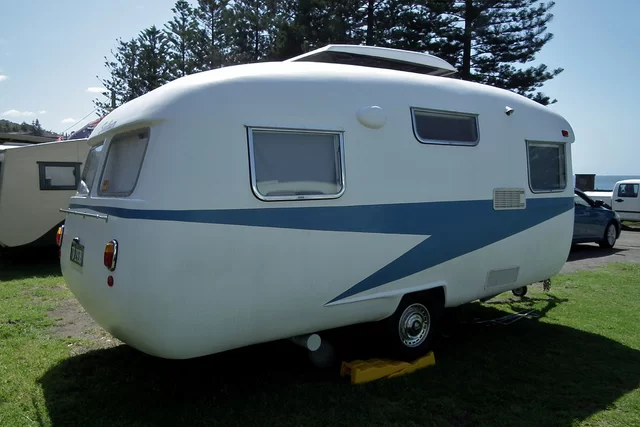A caravan is a hefty piece of kit – it can weigh anything from around 1500kg to 3500kg or more, and so it’s important to make sure that your existing (or prospective new) vehicle can handle the load. What’s more, it’s a good idea to leave a little room for manoeuvre rather than have a car/caravan combination which is near the max.

If you’ve seen any of the ‘caravan’ episodes of Top Gear you’ll know that, when things go wrong with caravans, it’s not pretty. However if you’re a caravan newbie, reading all of the information online to help you work out safe – and legal – car/caravan combinations, you’d be forgiven for thinking you need a PhD in physics. There’s a lot of jargon involved, although the concepts are in fact fairly straightforward.
Interestingly, when it comes to the law, there are in fact no legislated ‘safety margins’ as such for caravans (or ‘trailers’ as they are referred to in the legislation) in Australia – there are simply maximum towing weights for all vehicles and maximum laden weights for all towed vehicles, including caravans, and maximum combined weights.
The Caravan Council of Australia, however, advises that in all cases ‘the laden tow-vehicle should weigh 30% more than the laden caravan/trailer’.
To fully understand what is ‘legal’ and what is ‘recommended’, it’s important first of all to understand the jargon. Here are some of the terms you will hear bandied about…
Tare Mass
This refers to the weight of a vehicle or caravan when it is empty (ie ‘unladen’). It is specified by the manufacturer and includes those fluids (eg oil/coolant/fuel in the tank) that the vehicle would need to run, but does not include driver/passengers/luggage or any aftermarket additions.
Gross Vehicle Mass (GVM)
This refers to the maximum permissible weight of the vehicle/caravan ie how much extra load it can carry before exceeding its limits. GVM for a towing vehicle must include any extra weight put on the vehicle via the towball (see below).
Aggregate Trailer Mass (ATM)
This refers to the maximum weight of a caravan when it is being towed. It is the tare mass plus any other load in the caravan itself. This rating is set by the caravan manufacturer. It only applies when the caravan is in motion, not when it is parked, and needs to include the weight of any accessories added after purchase, and the weight of any onboard gas and/or water etc.
Tow Ball Download (TBD)
This refers to the weight of the caravan transferred to the towing vehicle via the towball. It must be included in the calculation of GVM for the towing vehicle above to determine whether it (the towing vehicle) is within its permitted maximum weight. As a very general guide, TBD is normally around 10% of the total weight of the caravan.
In addition the towing vehicle will have the following important specifications (listed in the manual or on vehicle specifications, which can normally be found on the manufacturer’s website)…
Maximum Braked Towing Capacity – this is the weight limit for a caravan equipped with brakes
Maximum Tow Ball Download – as above
Gross Combination Mass (GCM) – the maximum combined weight of the vehicle and caravan
If you are in the process of buying a caravan of course it’s very important to be aware of these limits and to heed the association’s advice. If you get a combination which maxes out the towing vehicle’s specifications, you will considerably increase fuel consumption and maximise the load on the chassis and suspension, not to mention the tyres and brakes. You will also have little room for manoeuvre on steep hills, and during high winds and other challenging driving conditions.
For these reasons, a smart option is to choose the caravan you like first and then choose the most appropriate towing vehicle!
Whether you’re getting just a caravan or a caravan and new vehicle to tow it, give us a call at Ezilend and we’ll of course help you sort out the finance…
Image credit: https://www.flickr.com/photos/50415738@N04/6262976143/in/photostream/



